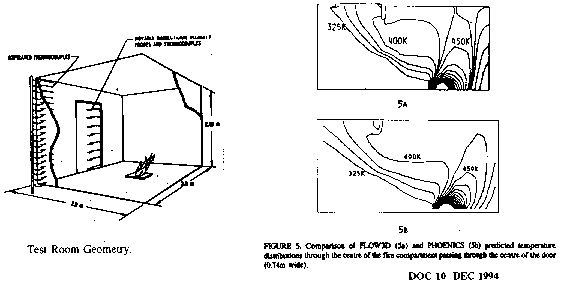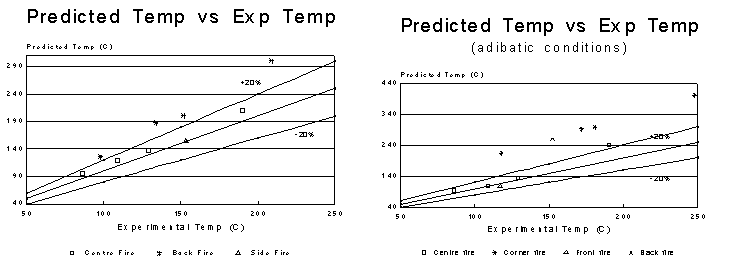SYSTEMATIC COMPARISON OF FIRE FIELD MODEL PREDICTIONS WITH EXPERIMENT.
The aim of this project is to provide the Fire Safety Engineer with insight into the range of applicability of fire field models in areas primarily of interest to building engineers.
The use of mathematical models for the simulation of fire phenomena within compartments dates back some 30 years, to a time before the common use of electronic computers. These early models were the precursors of the now commonly accepted zone models. The past 30 years of zone model evolution has seen considerable development in their sophistication and the establishment of a convincing battery of comparisons between model predictions and experimental data.
The systematic comparison of prediction with experiment (often called 'validation') is a crucial step in the general acceptance of model predictions and in determining the range of their valid application. While no degree of successful validation will prove a fire model correct, confidence in the technique is established the more frequently it is shown to be successful in as wide a range of applications as possible.
In contrast to zone models, fire field models have been under development for only about 15 years and consequently, considerably less validation has been completed. However, the 'validation' of fire field model predictions is essential to the continued development and acceptance of this complex procedure.
At the heart of the fire field model is the Computational Fluid Dynamics (CFD) code and a large proportion of these models are based on commercial CFD software such as PHOENICS and FLOW3D. The former is the core of the JASMINE code while the latter has been used to investigate the Kings Cross Underground fire as well as many other fire scenarios.

As the number and variety of fire field models increases it becomes necessary to provide a discriminating basis for their comparison. Success at a wide range of standard 'validation' exercises provides one means to this end.
This study concentrates on the core components of fire field models i.e. the CFD code. We attempt to evaluate the performance of the generic components of these models (e.g.: turbulence models, radiation models, boundary conditions, mesh distributions) and the sensitivity in the prediction of keyquantities such as ceiling temperatures, hot layer depth, smoke concentration.
Thus far, the performance of two codes - PHOENICS and FLOW3D - in simulating fire induced flows in domestic sized rooms has been examined. Using identical meshes, both models agree reasonably well with the observed trends. Based on comparisons of upper-layer temperature, mass fluxes into and out of the compartment and neutral plane height, both the FLOW3D and PHOENICS models produced reasonable agreement with measured room fire data. The FLOW3D and PHOENICS predicted doorway vertical velocity and temperature profiles are also in good agreement with the measured profiles.
However, both models had difficulty predicting the corner temperature stratification with the PHOENICS model completely smearing the lower portion of the profile. The observed differences in performance between the two models are thought to be due to differing treatments of the wall boundary conditions. Considerable improvements in the FLOW3D results were achieved by significantly refining the computational mesh.

Figures: Calculated and measured upper layer temperature (oC) for (left) centre, corner, back and front positioned fires - FLOW3D - and (right) centre, back and side positioned fires - PHOENICS.
Reference:
A Critical Comparison of a PHOENICS Based Fire Field Model with Experimental Compartment Fire Data. Authors: R Mawhinney, E Galea, N Hoffmann, M Patel. Journal of Fire Protection Engineering, Vol 6 No 4, pp 137-152 (1994).

